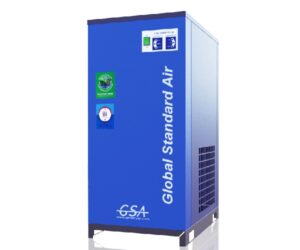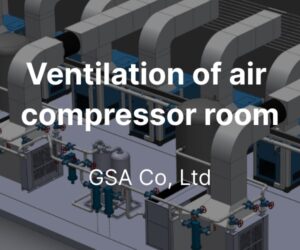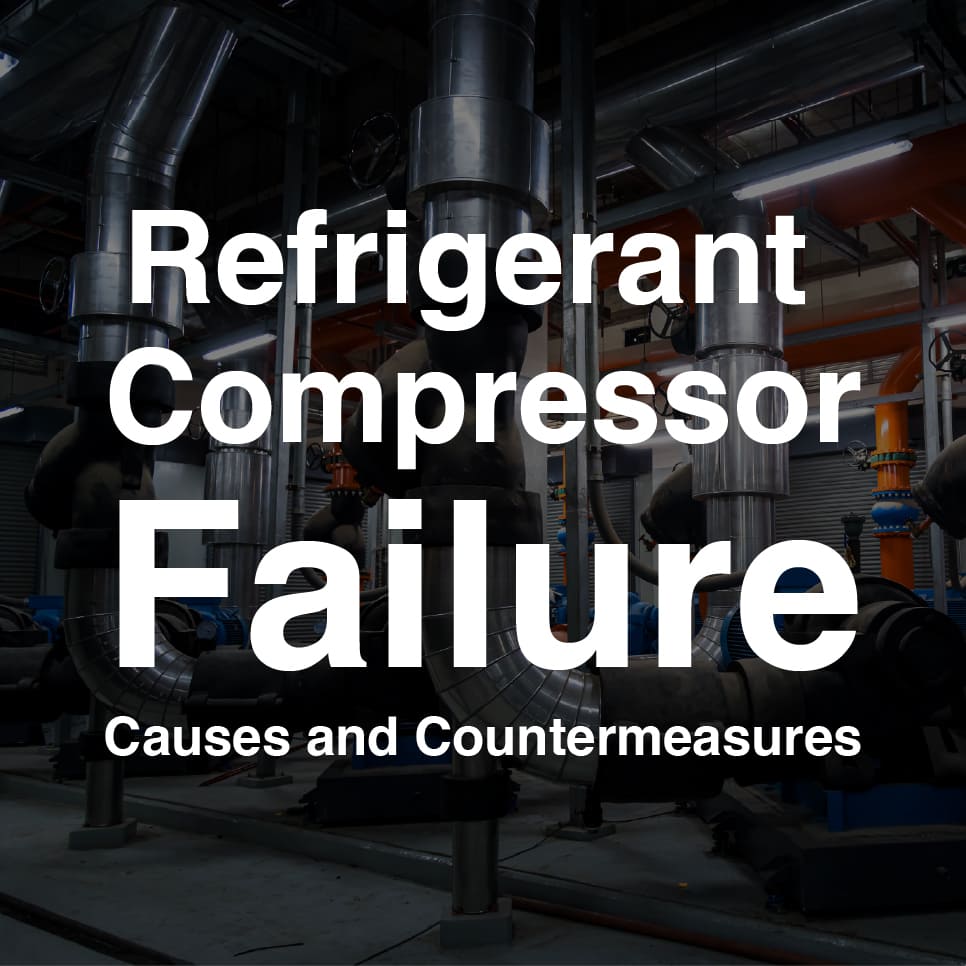
Contents
- Refrigerant compressor damage due to refrigerant flood-back
- Refrigerant compressor damage due to poor condensing
- Refrigerant compressor damage due to abnormal refrigerant circuit components
- Refrigerant compressor damage due to supply power problem
- Refrigerant compressor damage due to high load or lack of refrigerant
- Refrigerant compressor damage due to heat exchanger cracks, etc.
- Refrigerant compressor damage due to oil foaming
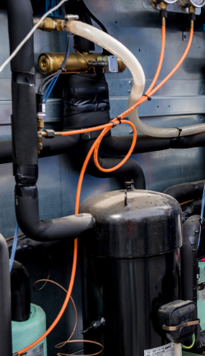
1. Refrigerant compressor damage due to refrigerant floodback
It is normal for the refrigerant to return to gaseous state to the refrigerant compressor with a slight temperature rise (superheat) after the evaporator. However, in the case of a sudden change in load (no load or low load), the liquid refrigerant is not completely evaporated in the heat exchanger (evaporator) and returns as a liquid.
Since liquid refrigerant is incompressible, if a large amount of liquid refrigerant flows into the compressor, the compression part of the refrigerant compressor may be damaged. To prevent this, HGBV (Hot Gas Bypass Valve) is installed to prevent the inflow of liquid refrigerant through capacity adjustment, but this cannot fundamentally prevent the liquid back phenomenon.
The load changes frequently, and the liquid back phenomenon can occur at any time due to various variables such as inlet temperature, ambient temperature, etc. In the case of a 24-hour operation plant, there is a high possibility of liquid back due to low load during night work.
The most ideal way to prevent liquid back is to always maintain a certain amount (50%) or more of the load.
It is normal for the refrigerant to return to gaseous state to the refrigerant compressor with a slight temperature rise (superheat) after the evaporator. However, in the case of a sudden change in load (no load or low load), the liquid refrigerant is not completely evaporated in the heat exchanger (evaporator) and returns as a liquid.
Since liquid refrigerant is incompressible, if a large amount of liquid refrigerant flows into the compressor, the compression part of the refrigerant compressor may be damaged. To prevent this, HGBV (Hot Gas Bypass Valve) is installed to prevent the inflow of liquid refrigerant through capacity adjustment, but this cannot fundamentally prevent the liquid back phenomenon.
The load changes frequently, and the liquid back phenomenon can occur at any time due to various variables such as inlet temperature, ambient temperature, etc. In the case of a 24-hour operation plant, there is a high possibility of liquid back due to low load during night work.
The most ideal way to prevent liquid back is to always maintain a certain amount (50%) or more of the load.
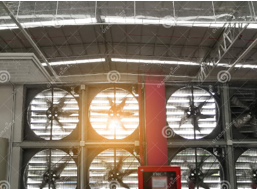
2. Refrigerant compressor damage due to poor condensing
The low-temperature refrigerant gas coming into the refrigerant compressor plays a role in removing heat from the refrigerant compressor generated during the compression process. If the refrigerant does not condense properly, the supply of liquid refrigerant becomes unstable and the refrigerant does not evaporate sufficiently in the heat exchanger, and the superheated refrigerant gas is returned to the refrigerant compressor.
The overheated refrigerant gas cannot effectively remove the heat generated from the refrigerant compressor and causes overheating of the refrigerant compressor. Overheating of the refrigerant compressor drastically reduces the lifespan of the refrigerant compressor coil and parts and acts as a cause of burnout of the refrigerant compressor. In addition, contamination of the condenser may lead overload of the condensing fan motor and fan motor failure.
The low-temperature refrigerant gas coming into the refrigerant compressor plays a role in removing heat from the refrigerant compressor generated during the compression process. If the refrigerant does not condense properly, the supply of liquid refrigerant becomes unstable and the refrigerant does not evaporate sufficiently in the heat exchanger, and the superheated refrigerant gas is returned to the refrigerant compressor.
The overheated refrigerant gas cannot effectively remove the heat generated from the refrigerant compressor and causes overheating of the refrigerant compressor. Overheating of the refrigerant compressor drastically reduces the lifespan of the refrigerant compressor coil and parts and acts as a cause of burnout of the refrigerant compressor. In addition, contamination of the condenser may lead overload of the condensing fan motor and fan motor failure.

The causes of condensation failure are as follows.
1) High ambient temperature Sufficient ventilation is required to prevent the ambient temperature from rising
2) condenser contamination Periodic cleaning is required to prevent condensation defects from contaminating condenser pins with oil or dust.
1) High ambient temperature Sufficient ventilation is required to prevent the ambient temperature from rising
2) condenser contamination Periodic cleaning is required to prevent condensation defects from contaminating condenser pins with oil or dust.
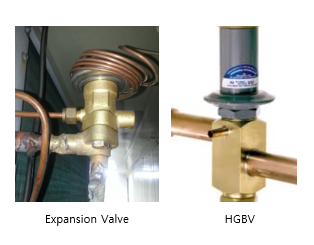
3. Refrigerant compressor damage due to abnormal refrigerant circuit components
The refrigerant compressor may be damaged due to an abnormality in the parts that make up the refrigerant system of the refrigerant dryer.
If there is an abnormality in the refrigerant parts, dew point and various abnormal symptoms are accompanied, so it is necessary to periodically inspect and manage the refrigerant dryer.
The refrigerant compressor may be damaged due to an abnormality in the parts that make up the refrigerant system of the refrigerant dryer.
- Expansion valve abnormality: In case the expansion valve opens too much or too little due to the abnormality of temperature sensor or internal parts.
- HGBV error: When an error occurs in capacity control due to HGBV error
- Filter drier: In case of clogged filter drier
- Fan controller and fan motor failure: Defective condensation due to fan controller failure or fan motor failure
If there is an abnormality in the refrigerant parts, dew point and various abnormal symptoms are accompanied, so it is necessary to periodically inspect and manage the refrigerant dryer.
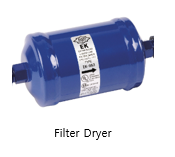
4. Refrigerant compressor damage due to a problem of power supply
Refrigerant compressor burnout may occur due to mechanical/electrical damage to the refrigerant compressor due to unstable power supply.
1) Excessive supply voltage fluctuation Normally, the voltage fluctuation range of the supplied power is within 5%, and a maximum voltage fluctuation of 10% is allowed. If the voltage fluctuation of more than 10% continues, electrical damage may occur due to deterioration of the coil of the refrigerant compressor. In particular, when used with equipment requiring a large motor load, preventive measures are required to prevent fluctuations in the voltage supplied to the dryer.
2) Sudden power interruption and supply Since the refrigerant compressor compresses the refrigerant gas at high pressure, it must be restarted after a certain period of time (usually around 10 minutes) after stopping. Sudden power interruption and supply may cause mechanical/electrical damage by repeating frequent start/stop of the refrigerant compressor within a short period of time. When restarting the dryer after stopping, operate it after at least 5 minutes have passed to smooth the refrigerant pressure.
Refrigerant compressor burnout may occur due to mechanical/electrical damage to the refrigerant compressor due to unstable power supply.
1) Excessive supply voltage fluctuation Normally, the voltage fluctuation range of the supplied power is within 5%, and a maximum voltage fluctuation of 10% is allowed. If the voltage fluctuation of more than 10% continues, electrical damage may occur due to deterioration of the coil of the refrigerant compressor. In particular, when used with equipment requiring a large motor load, preventive measures are required to prevent fluctuations in the voltage supplied to the dryer.
2) Sudden power interruption and supply Since the refrigerant compressor compresses the refrigerant gas at high pressure, it must be restarted after a certain period of time (usually around 10 minutes) after stopping. Sudden power interruption and supply may cause mechanical/electrical damage by repeating frequent start/stop of the refrigerant compressor within a short period of time. When restarting the dryer after stopping, operate it after at least 5 minutes have passed to smooth the refrigerant pressure.
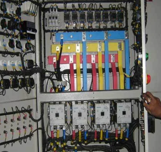
5. Refrigerant compressor damage due to high load or lack of refrigerant
If the load is high, overload and overheating of the refrigerant compressor may cause damage to the refrigerant compressor.
If the load is high, overload and overheating of the refrigerant compressor may cause damage to the refrigerant compressor.
- If the flow rate is higher than the rated flow rate
- When the temperature of the compressed air flowing into the refrigeration dryer is higher than the rated temperature of 38℃
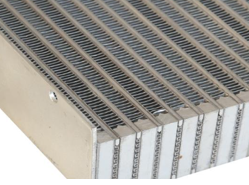
6. Refrigerant compressor damage due to the crack of heat exchanger
If the inside of the heat exchanger freezes due to a low load or a problem with condensate discharge, or if a crack occurs inside the heat exchanger due to a sudden change in temperature or pressure, the moisture generated inside the heat exchanger flows into the refrigerant compressor. It will damage the refrigerant compressor.
Keep the load above a certain level to prevent freezing of the heat exchanger or excessive temperature change. In addition, to prevent damage to the heat exchanger due to sudden pressure changes, open the inlet valve of the dryer slowly and pressurize it.
If the inside of the heat exchanger freezes due to a low load or a problem with condensate discharge, or if a crack occurs inside the heat exchanger due to a sudden change in temperature or pressure, the moisture generated inside the heat exchanger flows into the refrigerant compressor. It will damage the refrigerant compressor.
Keep the load above a certain level to prevent freezing of the heat exchanger or excessive temperature change. In addition, to prevent damage to the heat exchanger due to sudden pressure changes, open the inlet valve of the dryer slowly and pressurize it.
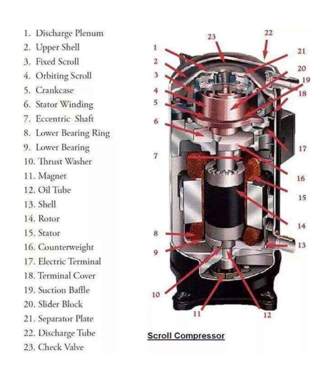
7. Refrigerant compressor damage due to Oil Foaming
Refrigerant and oil are mixed inside the refrigerant compressor, and the refrigerant with a large specific gravity is placed at the bottom of the crankcase of the refrigerant compressor, and a layer of refrigeration oil is formed on top.
When the compressor starts in this state, the liquid refrigerant evaporates due to the rapid pressure fluctuation in the crankcase, and a large amount of refrigerant oil is sucked into the suction valve, resulting in oil hammer and oil forming in the crankcase.
This foamy refrigeration oil reduces the viscosity and is accompanied by gas evaporation, hindering effective oil film formation, generating frictional heat inside the compressor, which causes internal damage to the piston or shaft.
To prevent this, a crankcase heater is attached to the bottom of the scroll refrigerant compressor, and oil forming can be prevented by preheating before starting the refrigerant compressor.
Refrigerant and oil are mixed inside the refrigerant compressor, and the refrigerant with a large specific gravity is placed at the bottom of the crankcase of the refrigerant compressor, and a layer of refrigeration oil is formed on top.
When the compressor starts in this state, the liquid refrigerant evaporates due to the rapid pressure fluctuation in the crankcase, and a large amount of refrigerant oil is sucked into the suction valve, resulting in oil hammer and oil forming in the crankcase.
This foamy refrigeration oil reduces the viscosity and is accompanied by gas evaporation, hindering effective oil film formation, generating frictional heat inside the compressor, which causes internal damage to the piston or shaft.
To prevent this, a crankcase heater is attached to the bottom of the scroll refrigerant compressor, and oil forming can be prevented by preheating before starting the refrigerant compressor.

